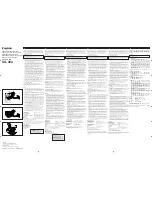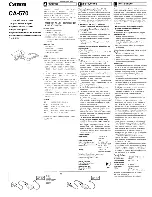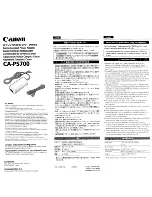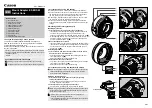
Configuring the Wireless LAN USB Adapter 4-13
Notes on
Wireless LAN
Configuration
When configuring a wireless LAN (WLAN), take note of the following points:
❑
Start by determining the areas to be networked, the number of users and the
type of devices to be used. Then determine the number of Access Points required
and where they should be placed.
❑
An Access Point provides a data rate of up to 11 Mbps, which is shared by all
wireless clients in the area covered by the Access Point. If two Access Points are
placed close to each other, they can simultaneously provide a data rate of up to
22 Mbps. However, they must operate in non-overlapping channels. Two Access
Points placed close to each other and operating on the same channel can provide
only one 11 Mbps per channel.
❑
Optimize the performance of the WLAN by ensuring that the distance between
two Access Points is not too large. In most buildings, WLAN cards operate within
a range of 100 to 300 feet (30 to 91 meters), depending on the thickness and
structure of the walls. Under normal conditions, an Access Point provides a
coverage of up to 150 feet (46 meters). However, in offices with walls or cube
walls, the coverage is only around 80 feet (24 meters).
❑
Radio waves can pass through walls and glass but not metal. If the signal on the
other side of a wall is weak, it may be that the wall has reinforcing metal in its
structure. Install another Access Point to circumvent this problem or move the
Access Point to another location.
❑
Floors usually have metal girders and metal reinforcing struts that weaken radio
waves.
Summary of Contents for Blaster 2030
Page 1: ......
Page 7: ...Safety Precautions ...
Page 10: ...Introduction ...
Page 14: ...1About Wireless LAN ...
Page 17: ...2Installing Hardware ...
Page 20: ...3 Installing and Uninstalling Drivers and Configuration Utility ...
Page 46: ...4 Configuring the Wireless LAN USB Adapter ...
Page 60: ...5 Configuring Your Computer s Network Settings ...
Page 67: ...A General Specifications ...
Page 70: ...B Troubleshooting ...
Page 75: ...C Frequently Asked Questions FAQs ...
Page 79: ...D Glossary ...
















































